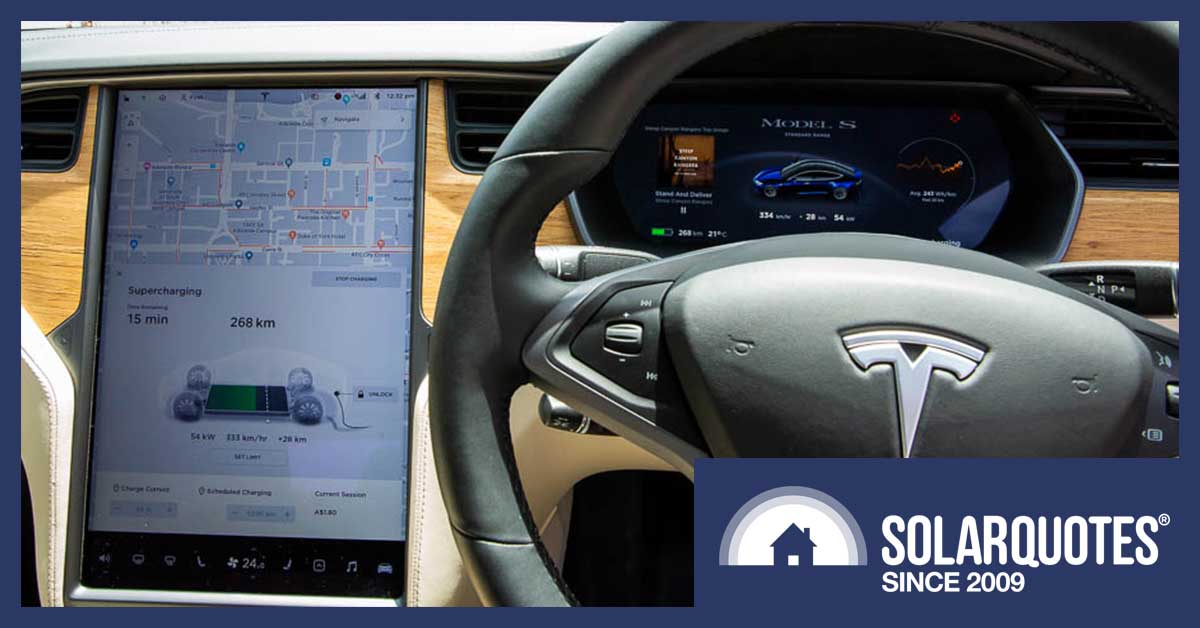
It’s 5:30 am and I’m sitting in SolarQuotes office waiting for Elon Musk’s big battery day announcement. This is pretty early for me, so it had better be good. I don’t normally come into the office until 5:45 am.
I have no idea what Elon’s going to say except it’ll be about batteries. My guess is he’ll say Tesla is starting large scale production of a new and improved battery cell the size of one of those annoying Japanese mini-drink cans that only contain enough fluid to accentuate how thirsty you are. There will be a spiel about how great they are, but nothing unexpected.
Unless of course, Elon Musk manages to smash some more windows with his balls.
It Starts With A Shareholder Meeting
It’s now six o’clock and the presentation has started. The screen is showing battery cells being produced on an automated production line but there’s no sound. I was expecting it to gently fade in to alert people that things are getting underway, but there is nothing. Is this intentional? I see three possibilities:
- Tesla has screwed up.
- Something at my end is screwed up.
- Tesla is so screwed up they don’t realize this makes it look like they screwed up.
A guy is now coming up on stage… he’s about to tap the microphone… and yes! There’s sound! He is announcing the start of the shareholders meeting. I have to sit through this because Tesla haven’t given a separate time for the battery day announcement. I don’t think this is a smart move by Tesla. As Chancellor Otto Von Bismarck famously said:
“There are three things you do not want to see being made. Sausages, laws, and little baby Bismarcks.”
Do they really want to increase the number of people who witness the Tesla board recommending stockholders vote against increased human rights reporting?
The stockholder votes are now coming in and the results are there will be no increased human rights reporting for Tesla. What a beautiful sausage! I hope those working for Tesla and its suppliers don’t feel as though the board has just baby Otto Von Bismarcked them over.
Tesla Is Making A Profit!
Anyone running a small business can tell you the last thing you want to do is make a profit. It just attracts the wrong kind of attention. Like from the Tax Office. But big US companies seem to like it. Possibly because they don’t seem to pay tax anyway.
Tesla has turned a profit for a whole year now. It’s only equal to about 1% of their capital but that’s an infinitely greater amount than a loss.
Their success does come at the cost of the internal combustion engine car industry. Thanks to Tesla and the pandemic economy, sales for conventional cars have been flushed so far down the drain you’ll need a toilet snake with a camera on the end to find them:
That’s all I have to say about the stockholder’s meeting. I’ll leave the rest up to the people who write business articles.
The Battery Day Announcement
The battery day announcement is about to begin and Elon Musk is greeted as he comes on stage by much honking of horns. The honking is because the event is being held in a car park with people sitting in cars on account of COVID. All the Tesla employees in the lot are wearing masks, which seems weird. You’d think Tesla employees would all be wearing disease proof space helmets by now. But it seems, when it comes to the coronavirus, there is no sacrifice Musk is not willing to let his workers make.
Elon Musk looks healthy. Being a billionaire must agree with him. Pictures of him in his 20s show he was balding, but now in his middle age he has a full head of hair. Amazing how that works. Also, not being on the edge of losing his company probably helps him seem more relaxed.
The presentation starts and Elon does a good job of public speaking by Elon Musk standards. His main promises are Tesla will:
- More than halve the cost of batteries by 2025, which will let them…
- Produce a fully autonomous electric car for $25,000 US in 3 years time.
The entire presentation was aimed at people like me who think:
“Tesla is nice and all, but I don’t see what is going to stop South Korea, Japan, and especially China — eating them alive.”
Everything said was aimed at keeping investors happy by explaining how Tesla is going to maintain a technological and competitive edge in the future.
I know the idea of a US company maintaining a technical lead in manufacturing rather than just in software or tax evasion seems weird these days, but we should remember Britain was well into its decline when they invented the automatic kettle in 1955, the ATM in 1967, the Goodies in 1970, and the World Wide Web in 1989.
Massive Battery Growth Required To Replace Fossil Fuels
To electrify transport and allow renewable generation to expand, Elon said it would be necessary to start producing batteries on the terawatt-hour scale, which is a lot. One terawatt-hour of batteries could power Australia for about 40 hours.
He said the world needs 10 terawatt-hours of battery production annually to electrify all road transport over the next 15 years. This is plausible. If the average electric vehicle battery pack is 50 kilowatt-hours then 10 terawatt-hours would be enough for 200 million EVs. Only 92 million road vehicles were produced in 2019 but agricultural machinery and mining equipment can also be electrified and Tesla may be expecting future vehicle battery packs to be quite large.
To replace fossil fuels in other areas we were told an additional 10 terawatt-hours of batteries will have to be produced each year for 15 to 25 years, and Elon says the actual annual production required may be higher. This graphic breaks down where non-vehicle battery production will be going — although I don’t know why they have 1,500 gigawatts for “Future EV”:
Elon’s figures may not be correct. If people start using self-driving taxis rather than owning private cars the amount of battery capacity required for vehicles will be reduced. It’s also possible to eliminate fossil fuels from electricity generation without using any battery storage, but using batteries will make it a hell of a lot easier.
The actual amount of battery storage used will depend on cost and if Tesla cuts costs by more than half then Elon Musk’s estimates may turn out to be right.
Terawatt-hour Battery Factories
In order to produce the vast amount of battery storage they say will be required, Tesla intends to build factories that annually manufacture batteries on the terawatt-hour scale. Because of all the advancements they’re making these will supposedly have their capital costs reduced by 75% per gigawatt-hour of annual production capacity and be 90% smaller:
The size reduction will come from simplifying processes and improving automation. Because modern automated factories don’t even have people with clipboards walking up and down between machines, I believe him when he says the factory size will be much smaller. I hope he’s right about the capital cost reduction, because that’s important for bringing down the price of batteries.
Much Cheaper Batteries
To stay in business and at least one step ahead of the competition, Tesla hopes to dramatically reduce the cost of batteries. They say Tesla have a plan to cut the price by more than half, although it’s hard to tell from the graph below as they neglected to put any numbers on the y axis:
A cynical person might say there are no numbers so Tesla can fill them in after the fact, but I’m sure the numbers were there. They were probably just knocked off after Elon Musk hit them with one of his balls of steel.
Elon comes straight out and tells us they intend to drop the price by 56% by 2025, but they never actually give the current figure Tesla says they are going to cut. It may be $100 US a kilowatt-hour since Elon predicted batteries would cost that much soon. So soon, in fact, he predicted Tesla would be at that point about a year ago. As far as I can tell, Tesla batteries are around that now.
Here’s a shot of Elon Musk and Drew Baglino, Tesla Vice President of Powertrain and Energy Engineering, in front of a graphic showing a breakdown of how savings in 5 areas will total to give a 56% reduction in the cost of batteries per kilowatt-hour:
In the interest of fairness, I’ll point out Tesla didn’t label the areas with red Comic Sans typeface — I did that.
The 5 areas they claim Tesla will make savings in are:
- Cell Design — Building a larger & better tab-less battery cell
- Cell factory — Reducing energy use and waste.
- Anode Materials — Low-cost silicon will be used.
- Cathode Materials — Expensive cobalt will be eliminated and production simplified.
- Cell Vehicle Integration — Reducing the effective cost of vehicle battery packs by having them provide structural support.
Cell Design: Tesla’s new battery cell will be larger and cheaper per kilowatt-hour. It’s called a 4680 cell because it’s 46mm wide and 80mm long. Normally, making cells larger reduces the rate at which they can be charged because the energy passes through one connection point called a tab. So, Tesla got rid of it and these cells will be tabless with dozens of connection points. This will allow vehicles using these cells to still be supercharged while reducing cell cost and simplifying manufacture.
These changes will apparently increase the amount of stored energy per kilogram of battery pack by 16%. But I can’t be certain because the figures weren’t given with enough context for me to completely understand what they were talking about. When dealing with people who are fond of rubbery figures it’s wise not to take anything at face value.
Tesla are currently producing these cells in a pilot facility. They say it will take about a year to reach a 10 gigawatt-hour annual output. Actual production plants may have 200 gigawatt-hours or more of annual output.
Cell Factory: Their new cell factories will eliminate many production steps; reducing costs, time, energy use, waste, and required space.
Anode Materials: The anode is the battery electrode that electrons flow out of when it’s discharged. To lower its cost Tesla will use silicon similar to what’s used for solar cells, grind it up, stick it in an elastic gel that can cope with the fact that it expands and contracts when used, and shove it in battery cells. They say this is much cheaper than other, more complex, approaches and comes to $1.20 US per kilowatt-hour. This may increase energy density by 20%, but I take that claim with a grain of salt.1
Cathode Materials: When a battery is discharged the cathode is the part of the battery electrons flow into. To reduce costs Tesla will eliminate the most expensive metal use for this part, which is cobalt. Nickel is better for energy density but isn’t as stable as cobalt and so removing it can result in faster battery degradation. This degradation will be countered in various ways and this graphic shows how Tesla will use different cathode compositions for different applications:
If you want a battery with a long cycle life and don’t care if it weighs more per kilowatt-hour, one with a lot of iron in the cathode can be used. For higher energy density, which can give a vehicle more range, a nickel and manganese cathode can be used. For even greater energy density a high nickel cathode can be used. (If you are wondering what the image in the top left corner is meant to be, it’s their future $25,000 US EV and not the ghost of internal combustion engine cars come to haunt them.)
My take from this is, if you are buying a long-range electric vehicle, don’t assume its battery warranty will be better than that of a shorter range vehicle.
To further reduce costs Tesla will simplify cathode production by eliminating some steps and improving others.
Cell Vehicle Integration: Tesla intends to reduce the cost of its vehicles by producing the frames in three main parts:
- The front bit.
- The back bit.
- The battery pack that will hold them together and give them strength.
Making the entire front and rear sections in one piece is very difficult because they’re made of aluminium and not dried toothpaste. The process requires the largest aluminium die casting machine in the world.
The front and rear sections will be held together with the battery pack, which will provide strength. Battery packs have to be strong anyway to resist impacts and protect occupants, so Tesla are going to make use of this to provide structural support for the vehicle, allowing them to reduce the weight of other parts of the frame.
Recycling
Elon said in the future all batteries will be made from recycled old ones, but at the moment there aren’t enough old batteries for that to be possible. It was also said that recycled materials will be used because the desired materials concentration is higher than they are in ores. This isn’t always correct, as sometimes recycled materials are contaminated in a way that makes it cheaper to use fresh material, but I hope this is correct.
I’ve reproduced the image below just to show how little lithium and cobalt there is in an average cell as I’ve noticed some people worry way too much about the price of these materials. They are only a small portion of the total cost of batteries. When manufacturers blame high raw material costs for batteries not falling in price as they promised they are generally lying.
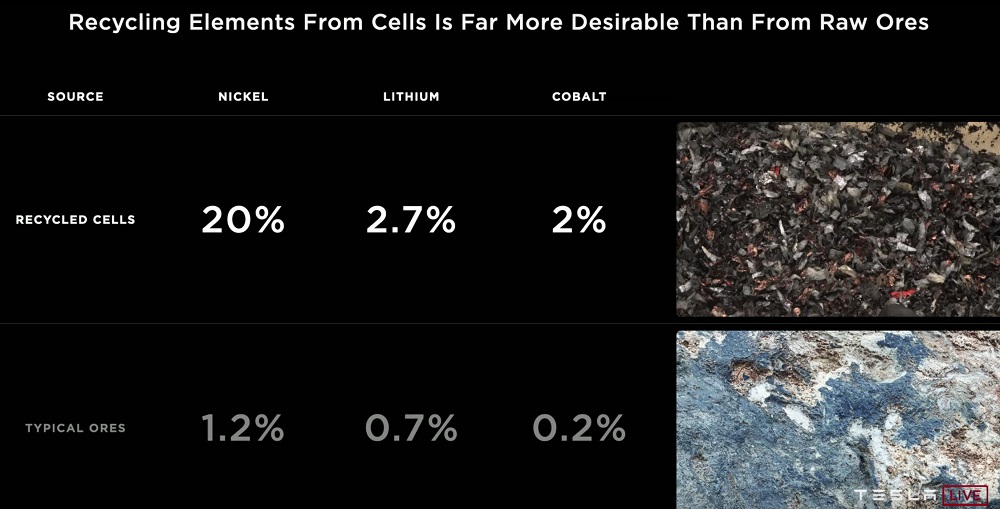
Example Australian ore concentrations: Nova nickel mine in WA 1.85%. Greenbrushes lithium mine in WA 1.2%. Grawler mine ore in SA 1% cobalt.
A Self Driving EV For $25,000 US
With all the battery cost reductions Tesla will be making, Elon says in three years time they will produce a fully self-driving electric vehicle for $25,000 US. At the current exchange rate plus GST that comes to $39,000 Australian. While that’s a little pricey for someone in my stinginess bracket, its running costs will be much lower than for any similar-sized petrol or diesel vehicle. Unfortunately, while we can hope they have improved, given Tesla’s past performance with getting things done on time it may be 4 years before it’s available in the US and longer before you can get the EV here.
I have no trouble believing that someone will have autonomous vehicles that are permitted to drive on roads in three or four year’s time, I just find it very hard to believe whatever Elon Musk says on the topic given the large number of things he has said about that have turned out to be untrue. So I’m automatically primed to call shenanigans whenever he mentions it.
Tesla Now Hiring
The figure given for battery manufacture employment at the 20 terawatt-hour a year level was 2.8 million. A message repeated a number of times through the presentation was Tesla wanted talented people to come and work for them. This certainly makes it seem as though Tesla is rapidly expanding. After all, as Tesla workers are usually reasonably young, they probably aren’t just trying to make up for those they lost to the plague.
Improving worker productivity might be why Elon Musk wants to stick computer chips in people’s brains. While it might sound weird, it’s not that strange given we already have cochlear implants. But what I find really odd is how another billionaire, Bill Gates, is spending money to develop vaccines to save lives and people accuse him of using it as a front to inject mind-controlling computer chips into people, but when Elon Musk says, “I will put a computer chip in your brain,” people think it’s great.
Good Luck, Elon
Provided Tesla can pull off the cost reductions Elon is promising they may stay one jump ahead of the competition. If Tesla can produce battery cells at a lower cost than anyone else their stock may even be worth its current evaluation. But I don’t see them as having anything that will give them bulletproof business protection. Tesla’s main advantage seems to be they are big and currently growing bigger. But this may still be enough for Tesla to dominate the battery and EV market for decades to come, if combined with skilled management.
But if they do get eaten alive, I hope it’s because Tesla met all their cost reduction goals but the competition did even better.
Footnotes
- Or if I am feeling depressed a grain of lithium salt. ↩

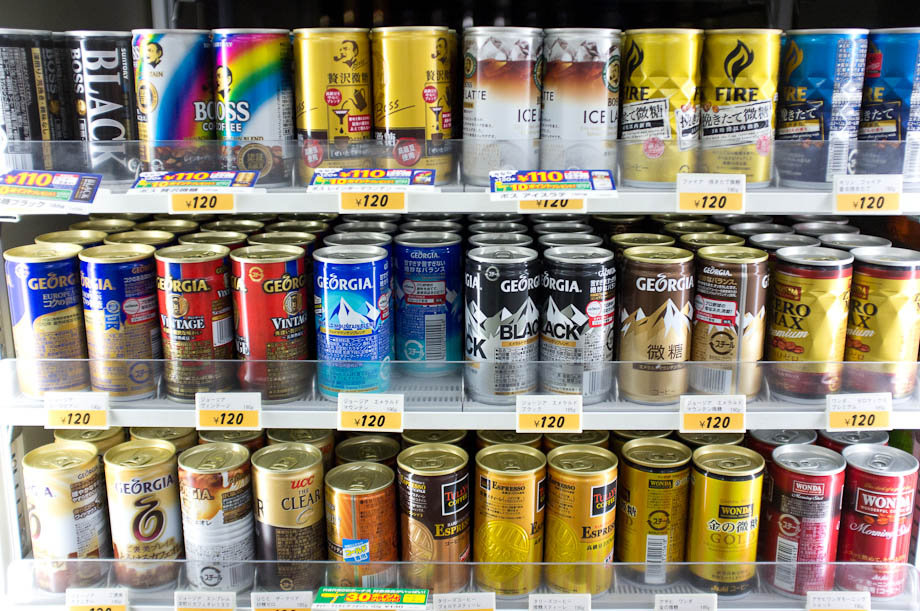

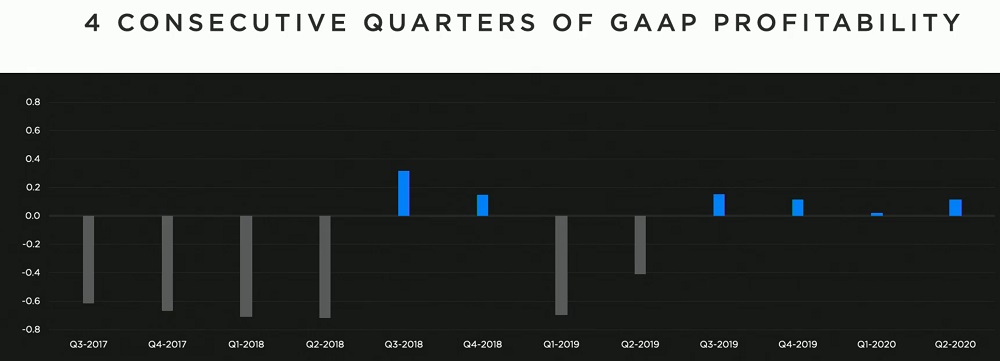
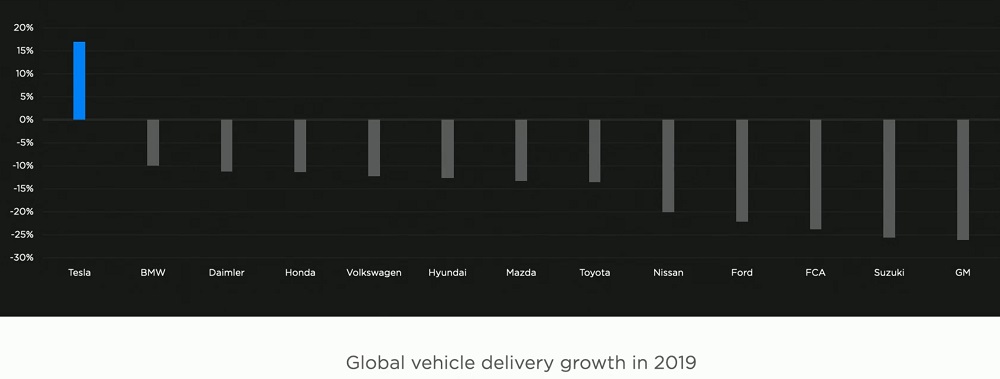
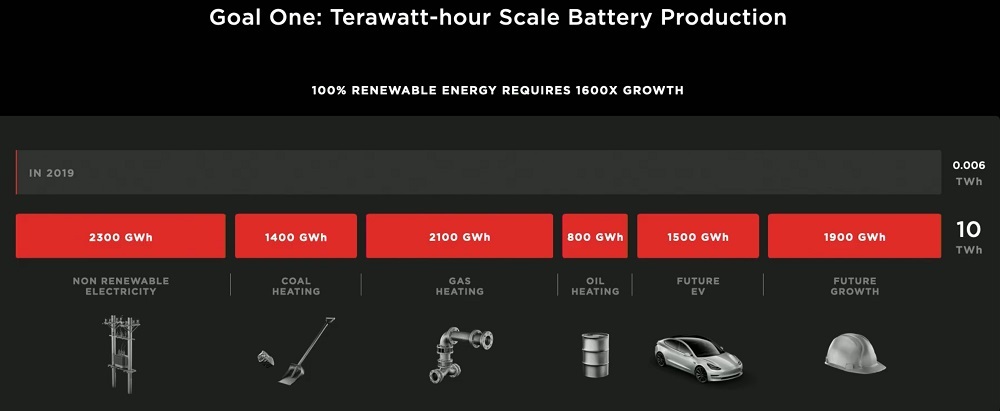
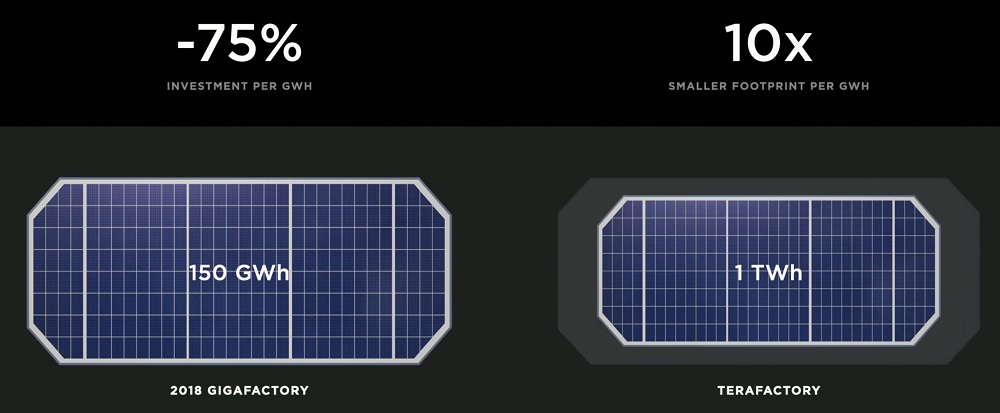
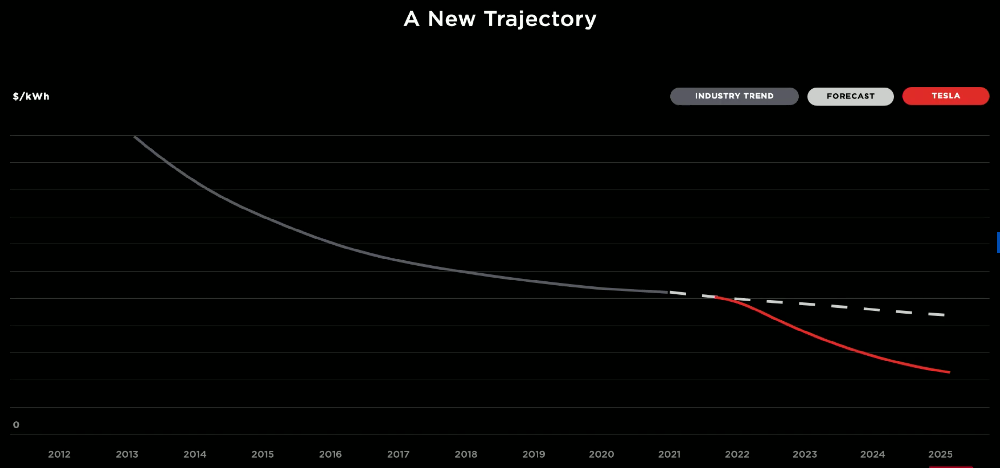
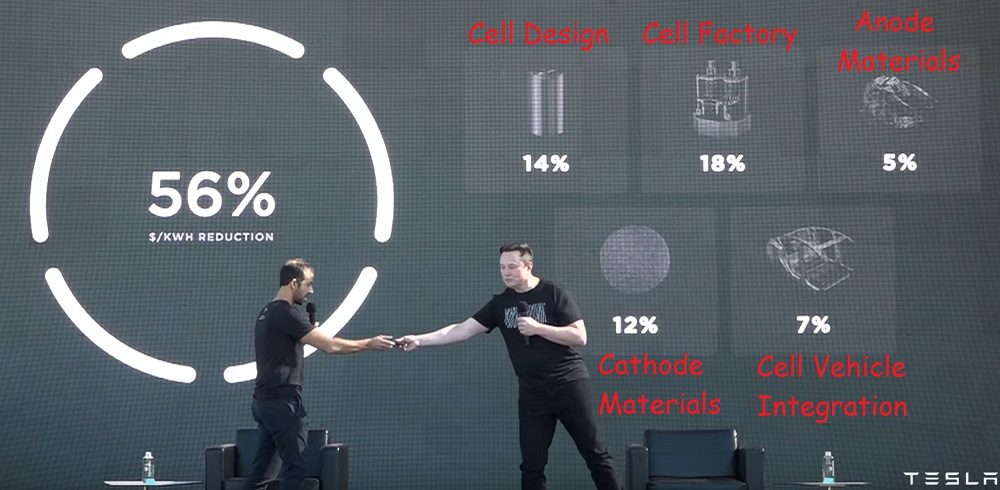
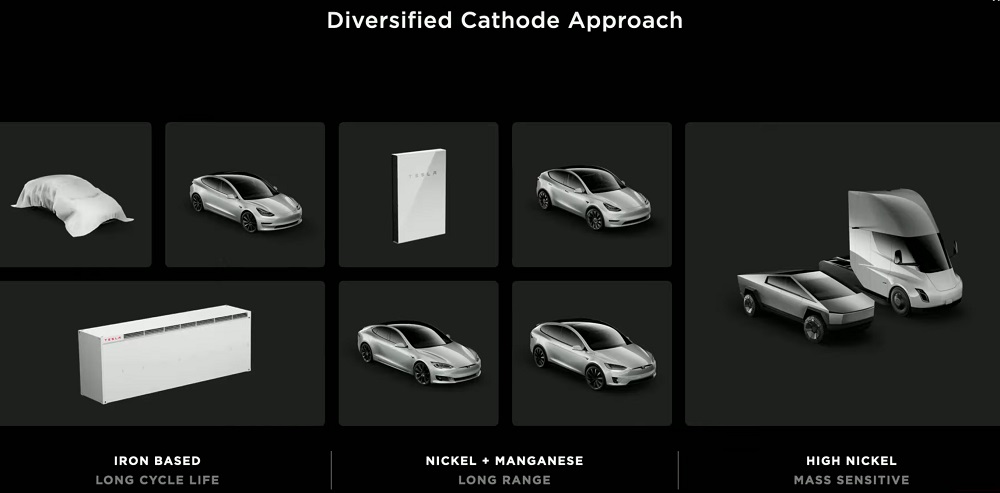
 RSS - Posts
RSS - Posts



I was about to consign Elon to the bowels of history until you admitted it was you that added the red comic sans labels. That was pure evil.
“The presentation starts and Elon does a good job of public speaking by Elon Musk standards….” Nope.
Otherwise, the best analysis of Battery Day we’ve read.
Was Battery Day overhyped? Maybe. TSLA price seems to reflect that… .
Best outcomes, if they ‘come out’:
Extended range (16%?)
Cheaper Model 2 (<AU$40K)
Smaller CT for Australia (?)
However no mention of MMB or V2G at all. Maybe Musk is sucking in the Shorts, to batter them later this year(?)
In the Q&A afterwards, Elon & co came out pretty strongly against V2G, except for possibly some grid support functions (I assume high power, low energy bursts that won’t drain the battery much)
Besides if Tesla can do Level 5 Autonomy, most cars won’t spend much time idle and plugged in.
“Besides if Tesla can do Level 5 Autonomy, most cars won’t spend much time idle and plugged in…”
In my long-shelved fantasies of FSD, I imagined being chauffeured home, slightly inebriated, from some social activity or another, totally immune to any legal repercussions…. (!)
Your perception (EVs out-on-the-town, partying sans owners) rather than diligently powering our homes, may be equally fantastic, Finn. My neuralink fried at the very thought of such shenanigans… .
G’day Ronald,
Great summary!
Whilst you were trying to be ever so subtle, I still LMFAO when I read … ‘I hope those working for Tesla and its suppliers don’t feel as though the board has just baby Otto Von Bismarcked them over.’
🙂 🙂 🙂
Cheers
PeterT
Poor old Elon. Nobody gets it. He WANTS the “competition” to overtake him so electric vehicles become the norm. Don’t you get that yet? (He does just keep on making it more difficult for them though – hehehehe que evil guffawing)
“Tesla intends to reduce the cost of its vehicles by producing the frames in three main parts:
The front bit.
The back bit.
The battery pack that will bring them together and in the darkness bind them”
Fixed that for you…
…in the land of Texas, where the darkness lies…
So, the DCS 15kWh 100% usable capacity battery will still be more reputable, more efficient, and, more economical (in terms of Levelised Cost Of Storage), and, longer lasting ( in terms of cycles), and, likewise with the BYD B Box Pro 13.8, and, even the LG Chem RESU 13 , than a Tesla battery, for decades to come?
It seems that the muskrat, like the feral government, is all smoke (in the case of the feral government, coal smoke) and mirrors.
What “million mile battery”? Party drugs have strange effects…
So, if there is a big shift away from private vehicle ownership – to autonomous taxis – won’t we have perhaps 10% as many vehicles, working 10 times as hard, therefore cycling 10 times as fast.
So, batteries wearing out 10 times more quickly?
How does this significantly reduce the total number of batteries required?
Just a thought…
Can’t help wonder why Musk would ‘overhype’ just days before The Big Day, when he must have known the MMB wasn’t ready to fly… . It may be worth remembering that many months before he conducted his five-for-one stock split, we all reacted with disbelief when he announced that TSLA stocks were overpriced(!)
Is he again trying to reposition the stock, lowering it for whatever reason, to later announce The Next Big Thing… and watch it soar? It’s in free-fall right now… . Hard to prove there’s market manipulation, but I figure there’s method in (t)his madness… .
Boy you’re a pack of cynical bastards. Almost as if they haven’t built Roadster, S, X, 3, Y, have Semi, Cybertruck and Roadster on way, factory in USA, China, building one in Berlin and Texas and have sold well over a million BEVs…just the front and rear casting with structural battery is a huge thing. NOONE is doing that. I agree the shareholder bit in the front was silly and Musk is a terrible presenter, but focus on the content – tabless, dry cathode. This is big stuff and good on them for making batteries and engineering sexy. Who cares about share price (not me because I bought them at effective $52). Oh and autonomous will happen, it’s just (surprise, surprise) REALLY hard, but NOONE with their stupid LIDAR is within cooeee of Tesla on that.
Just a little disappointed that the C-T Tri-Motor we’ve ordered won’t materialise, Guido. Maybe the ‘wolverine’ version will arrive before my demise!~ Stock recovered some ground overnight.
I’ve heard it’s easier to get a US car approved for use in Australia than the US, but I’m not a revhead and don’t know the details. But if we can’t get a cybertruck that will be a pity because it is the Tesla vehicle I wanted the most. If I can’t get one, what am I going to strap to my Stratolaunch Megaplane?
Under the stupid rules probably be relatively easy to get Cybertruck but you’ll have to RHD it, like those stupid massive RAMS and stuff. Prob be expensive tho.
How will all this stuff be affected by hydrogen powered fuel cell technology?
I doubt it will be affected, as I really don’t see hydrogen fuel cells being able to compete on price, but if they do become competitive they will be an additional useful tool to help eliminate fossil fuel use.
I think the worldwide sales say it all. And LNP like hydrogen, so probably a bad idea. Generating zero emissions hydrogen very expensive and fuel cells not very efficient – last thing I saw said from 100kwh of renewables used to generate hydrogen, store, transport and run thru a fuel cell you get 23kwh of elecktrickery to move car (100kms-ish). 100kwh of renewables generated, transmitted and used to charge battery gives 69kwh of electrickery to move car. So unless you got free electrickery FCEV 3 times as expensive to run. And hydrogen inefficiency governed by fundamental laws of physics. Battery EVs have huge gains ahead.
https://thedriven.io/2020/09/22/airbus-wants-to-put-a-hydrogen-plane-in-the-air-by-2035/
The Driven has some comments on both in the aviation sector. Nicola long distance trucks plan to use hydrogen with battery power confined to their urban trucks.
It is fun to watch all this from the sidelines in the country where gas pipelines are the infrastructure of the moment.
I’m never likely to buy a Tesla anything but I’m still worrying about the mental imagery of our Ronald waking up with Elon Musk that only nightmares are made of.
Also Ron did Finn pay you overtime or penalty rates for the 5.30am start ?
I have an ongoing contract with Finn. This means I have to work in an ongoing fashion until I collapse. (Or Finn isn’t looking, in which case I curl up underneath the table and go to sleep. So far, I haven’t woken up with any tech dude bros when doing this.)
There’s nothing lighter than hydrogen fuel — unless perhaps you are looking at stuff that perhaps shouldn’t be used on an inhabited world — so it makes for a good aviation fuel in that regard. But for now we can get to zero net emission flight by capturing and sequestering CO2 released by planes. As we have a lot kerosene burning planes and their expected lifespans have recently been increased by over a year, this may be the main method of getting zero emission flight for a long time.
Hi Ronald
I guess when you say “capturing and sequestering CO2 released by planes”, you are referring to growing more trees rather than somehow capturing the CO2 at the exhaust of the engines?
But – if these trees are being burdened with this job, surely they are then unable to assist REDUCING the levels of CO2 that are concerning everyone.
Seems to me the logic is flawed – we should be REDUCING total CO2 emissions at the source (after all, we have to always deal with agricultural emissions), rather than continue to generate CO2 and then have to come up with ways to extract it from the atmosphere?
I guess your earlier comment relates to the Russian experiments in nuclear heating of the jet engine airflow (in place of the combustion chamber) – I recall the aircraft flew, but I think the crew all got sick and died – not sure.
There are a variety of methods of capturing CO2 from the atmosphere and then sequestering it that may not be very expensive when done on a large scale. These include amending soil with charcoal (biochar), dumping agricultural waste in deep ocean waters, and mucking around with various minerals.
The Tupolev Tu-119 was a plane that tested flying around with a nuclear reactor onboard although it wasn’t powered by one. Rumors are the crew was wasn’t shielded but the truth is they experimented extensively with shielding. I just don’t know if the shielding actually worked or not.
Ronald Brakels,
You state:
“There’s nothing lighter than hydrogen fuel — unless perhaps you are looking at stuff that perhaps shouldn’t be used on an inhabited world — so it makes for a good aviation fuel in that regard.”
Unfortunately, liquified hydrogen (LH2) as an aviation fuel is not “drop-in”, meaning much of the aviation infrastructure would need to be changed to accommodate it, which I’d suggest makes it unattractive. Per a 2009 conference paper on aviation and alternative “non-drop-in” fuels:
“2.7 Hydrogen offers a high energy density per mass, hence promising payload or range increase for aircraft. However, for aviation, hydrogen will have to be cooled down to the liquid state (LH2, 253°C), for reasons of volume and weight of tanks. Hydrogen (KH2) needs 4 times a greater volume than kerosene and the tanks in terms of insulation or pressure resistance would need to be redesigned and would no longer be able to be integrated in the airframe wings. The use of this technology has been envisaged for a small or standard regional aircraft as well as for unconventional aircraft types. The specific energy consumption is estimated to be 8 to 15% higher than with conventional fuel.”
https://www.icao.int/Meetings/caaf2009/Documents/CAAF-09_IP013_en.pdf
From Wikipedia, on design considerations:
“…most liquid hydrogen aircraft designs store the fuel in the fuselage, leading to a larger fuselage length and diameter than a conventional kerosene fuelled aircraft. This lowers the performance due to the extra wetted area of the fuselage. The larger fuselage size causes more skin friction drag and wave drag. On the other hand, hydrogen is about one-third of the weight of kerosene jet-fuel for the same amount of energy.”
https://en.wikipedia.org/wiki/Hydrogen-powered_aircraft
You also state:
“As we have a lot kerosene burning planes and their expected lifespans have recently been increased by over a year, this may be the main method of getting zero emission flight for a long time.”
The interesting question is whether there will be cheap, abundant aviation fuel to run them for “a long time”? See the series of my comments starting at: https://www.solarquotes.com.au/blog/build-electric-cars-australia/#comment-813050
I may be wrong, but I think the days of cheap flights maybe over.
Perhaps if battery technology can crack the 400 Wh/kg density barrier with high cycle life, produced affordably in large quantities, electric propulsion aircraft might be a promising solution.
https://thedriven.io/2020/08/25/musk-hints-tesla-batteries-will-enable-electric-flight-by-2023/
Yes, I expect capturing and sequestering CO2 equal to the emissions from kerosene will be the most practical way to have long distance carbon neutral flight for some time.
But if it costs $100 a tonne to capture and sequester CO2, flight still remains reasonably cheap for the typical developed country citizen. (There are additional warming effects from flight besides greenhouse gas emissions that should also be accounted for and included in the carbon sequestration component of an flight ticket.)
CCS is a crock, about as real as the Easter bunny, no matter how much taxpayers $ they throw at it. It’s just fossil fuel execs BS. There is no such thing as CCS. Carbon “sequestering” is a slightly different crock, but still a crock. An ounce of prevention is worth a pound of cure.
Carbon capture and sequestration at $100 per tonne would add about 10 cents per kilowatt-hour to the cost of coal power. A source of energy that is not competing well with renewables without having to pay anything for emissions at the moment. So yes, what fossil fuel execs used to say about it generally was bullshit. But they are kind of quiet about it now.
Anyway, the trick is to require companies to pay for cleaning up the mess they make and then they magically start eliminating CO2 emissions they swore black and blue were impossible reduce before they actually had to pay to emit.
Ronald (Re your comment at October 2, 2020 at 9:30 pm),
You state:
“…I expect capturing and sequestering CO2 equal to the emissions from kerosene will be the most practical way to have long distance carbon neutral flight for some time.”
I can’t see any economic incentive for investing in CCS if there’s no price put on GHG emissions.
Would you live near a CCS site, Ronald? I wouldn’t.
See paragraphs 5.21-5.36: https://www.aph.gov.au/Parliamentary_Business/Committees/House_of_Representatives_committees?url=/scin/geosequestration/report/chapter5.pdf
Meanwhile, the clock’s still ticking, and although not as much as last year, humanity continues to pump more GHG emissions into the atmosphere.
See: https://www.spglobal.com/platts/en/market-insights/latest-news/coal/093020-eia-forecasts-10-decline-in-us-annual-energy-related-co2-emissions-in-2020-lowest-in-years
Recent results from the Scenario Model Intercomparison Project (ScenarioMIP), dated Sep 16, show:
* All GHG emissions scenarios reaching 1.5 °C of warming compared to the 1850–1900 baseline in the second half of the current decade (i.e. 2020s);
* At low GHG emissions scenarios (under SSP1-2.6), 2 °C of warming is reached late 2050s;
* At high GHG emissions scenarios (under SSP5-8.5), 2 °C of warming is reached as early as the late 2030s, and 5 °C is reached by the mid-2090s;
See: https://esd.copernicus.org/preprints/esd-2020-68/
The climate in the 2030s will not be like now.
Yeah, I used to live on a carbon capture site. Didn’t sequester it though. And I did win a prize for my role in designing carbon capture equipment. I put a hole in a steel container. I didn’t put the hole in it myself, but I told someone to put the hole there.
In order for carbon to be captured and sequestered there does need to be a carbon price equal to the cost of capturing and sequestering carbon. Hopefully Scott Morrison will get onto that right away.
By the way, I suspect we’re not thinking about the same thing when it comes to the topic of atmospheric CO2 capture and sequestration.
CCS (carbon capture and storage or sequestration or whatever) is an absolute crock whichever dodgy form you’re thinking of. It doesn’t work. Anywhere. In any form. Ever. It’s a ruse, a corporate and denialist politician magicians trick to divert attention from what’s going on. The only answer is not emitting CO2e. CCS is the hydroxychloroquine of global warming.
I’m sure we’re not thinking of the same thing. Planting a tree can help.
Planting a tree in Australia might help, but so might putting a bandaid on a sliced carotoid artery. And CCS promoters aren’t even talking about planting even 1tree (they’re the same parties clear felling Australia and burning the Amazon). They’re talking hocus pocus pseudoscience BS about magically scrubbing CO2 from burning stuff. AND tipping taxpayers $ in to it. “Clean coal”.